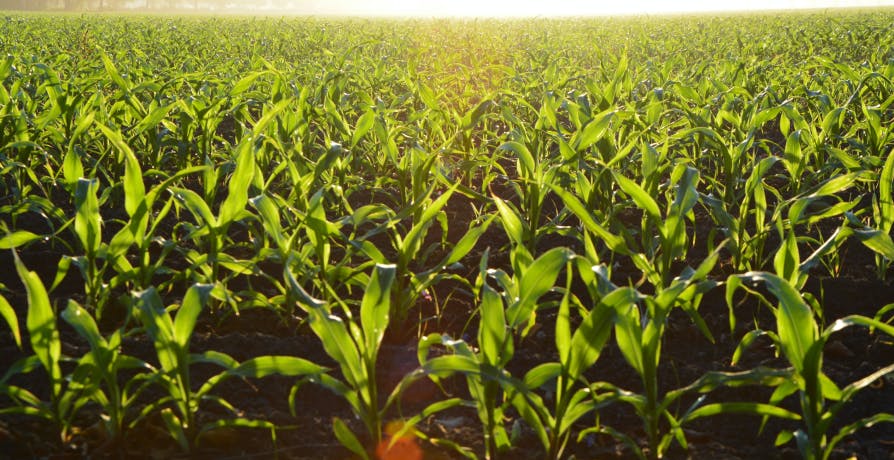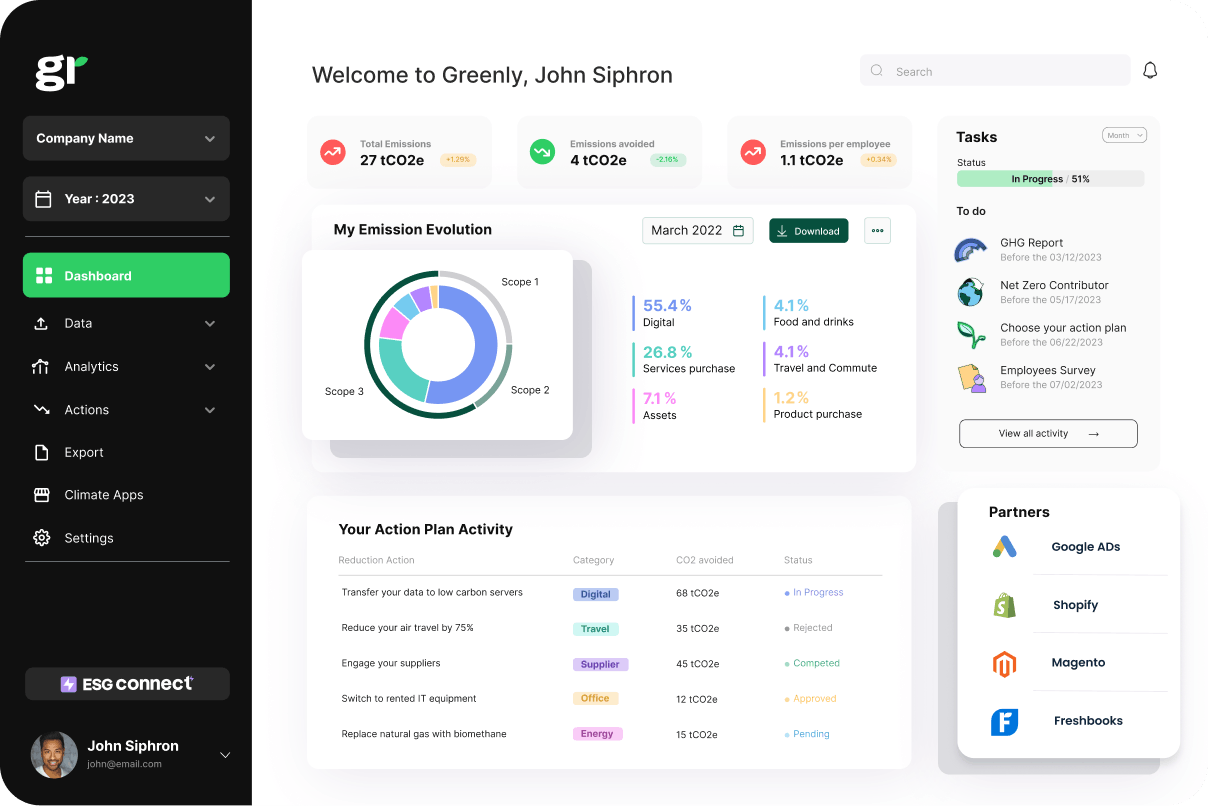ESG / CSR
Industries
The environmental challenges surrounding fertilisers



Fertilisers are essential for modern agriculture, but their environmental impact is hard to ignore. While they boost food production, they also contribute to water pollution, greenhouse gas emissions, and soil degradation.
In regions like the EU, UK, and US, these challenges are driving new policies and debates. The EU’s Farm to Fork strategy aims to cut fertiliser use, while the UK navigates post-Brexit regulations. In the US, rising prices and innovations are reshaping the industry, but controversies - like cheap Russian imports - add complexity.
👉 In this article, we’ll explore the environmental challenges of fertilisers and what’s being done to address them.
What are fertilisers and why are they essential?
Fertilisers play a fundamental role in global agriculture, providing crops with the nutrients needed to grow efficiently and produce higher yields. Fertilisers replenish essential nutrients in the soil, particularly nitrogen (N), phosphorus (P), and potassium (K) – often referred to as NPK. These nutrients are vital for plant health, supporting everything from root development to photosynthesis.
There are two main types of fertilisers: synthetic (chemical) and organic. Synthetic fertilisers, produced through industrial processes, offer quick and targeted nutrient delivery. Their widespread use over the past century has been instrumental in feeding a growing global population. However, their production is energy-intensive and contributes significantly to greenhouse gas emissions.
Organic fertilisers – such as compost, manure, and biofertilisers – provide a more sustainable alternative by improving soil health and structure over time. While they are slower to release nutrients, they play a crucial role in regenerative agriculture and reducing reliance on chemical inputs.
Today, fertilisers are a necessity for farmers. With the global population expected to reach 10 billion by 2050, demand for food continues to grow. Yet, as fertiliser use increases, so too do its environmental consequences.

The environmental challenges of fertiliser use
While fertilisers are essential for modern agriculture, their overuse and mismanagement have led to significant environmental challenges. From polluting water systems to contributing to climate change, the consequences of fertiliser use are increasingly difficult to ignore.
Soil degradation and nutrient imbalances
Over-reliance on synthetic fertilisers can degrade soil health over time. Excessive application often leads to soil acidification and reduces organic matter, making soils less fertile. For example, continuous use of nitrogen-based fertilisers can cause nutrient imbalances, which not only impact crop yields but also reduce the soil’s ability to retain water and nutrients naturally.
Water pollution – eutrophication
Nutrients from fertilisers, particularly nitrogen and phosphorus, often leach into nearby rivers, lakes, and oceans through runoff. This leads to a process called eutrophication, where excess nutrients trigger rapid algae growth. The resulting algal blooms block sunlight and deplete oxygen in the water, creating “dead zones” where aquatic life cannot survive. A well-known example is the Gulf of Mexico, where fertiliser runoff from the Mississippi River Basin has contributed to one of the largest dead zones in the world.
Greenhouse gas emissions
Fertiliser use is a major contributor to climate change. The production of synthetic fertilisers is energy-intensive, relying heavily on fossil fuels. Additionally, when nitrogen-based fertilisers are applied to soil, they release nitrous oxide (N₂O) – a greenhouse gas nearly 300 times more potent than carbon dioxide. The IPCC estimates that nitrous oxide emissions from fertilisers account for around 5% of global greenhouse gas emissions.
Biodiversity loss
Fertiliser runoff doesn’t just affect water systems – it also disrupts ecosystems on land and at sea. Excess nutrients favour certain fast-growing species, often at the expense of native plants and animals. For example, in coastal areas, nitrogen pollution can disrupt marine ecosystems, impacting fish populations and local biodiversity. On land, fertilisers can alter the natural composition of grasslands and forests, leading to a decline in plant and animal diversity.
| Challenge | Impact | Example |
|---|---|---|
| Soil degradation | Reduces soil health, causes acidification, and nutrient imbalances. | Overuse of nitrogen fertilisers. |
| Water pollution – eutrophication | Nutrient runoff causes algal blooms, depleting oxygen and harming aquatic ecosystems. | Gulf of Mexico dead zone. |
| Greenhouse gas emissions | Nitrous oxide emissions contribute to climate change; production is fossil fuel-dependent. | IPCC: 5% of global emissions. |
| Biodiversity loss | Alters ecosystems, reduces native plant and animal diversity on land and in coastal areas. | Coastal nitrogen pollution. |
The global reliance on fertilisers
Fertilisers are a cornerstone of modern agriculture, but their global scale of use is staggering. Each year, millions of tonnes of nitrogen, phosphorus, and potassium fertilisers are applied to fields across the world, enabling higher crop yields to sustain a growing population. However, this reliance has significant environmental and socio-economic consequences.
Increasing fertiliser demand
As the global population approaches 10 billion by 2050, the demand for food – and therefore fertilisers – continues to rise. Countries with intensive agricultural practices, such as the US, China, and India, account for the majority of fertiliser use. For example, nitrogen fertiliser consumption has more than doubled in the past 50 years, driven by industrial farming and the need for higher yields.
Geographic disparities
While fertiliser overuse in developed regions leads to environmental harm, underuse in many developing countries contributes to poor crop yields and food insecurity. In sub-Saharan Africa, for example, fertiliser application rates are among the lowest in the world, leaving soils depleted and limiting agricultural productivity.
The economic pressures on farmers
Fertilisers are expensive, particularly in times of energy crises and geopolitical instability. For example, the war in Ukraine has disrupted global fertiliser supply chains, with sanctions on Russian exports and rising natural gas prices significantly increasing costs. In Europe, fertiliser prices more than doubled in 2022, placing enormous financial strain on farmers and food systems.
The unintended consequences
While fertilisers are necessary to feed the world, their widespread use has unintended consequences. Excess nutrients leach into water systems, nitrous oxide emissions worsen climate change, and long-term soil degradation threatens future agricultural productivity. In regions with intensive farming, this creates a cycle of dependency: degraded soils require even more fertiliser to maintain yields, further exacerbating environmental harm.
Recent developments and controversies in fertiliser use
The fertiliser industry is undergoing significant changes, influenced by regulatory shifts, market dynamics, and technological innovations. These developments, particularly in the EU, UK, and US, are accompanied by growing controversies, including farmer protests and geopolitical tensions.
EU regulations
The EU Fertilising Products Regulation (EU) 2019/1009 came into effect to harmonise standards across member states and encourage the use of organic and recycled fertilisers. This regulation aligns with the EU’s Farm to Fork strategy, which aims to reduce fertiliser use by 20% and cut nutrient losses by 50% by 2030.
While these measures are intended to reduce environmental harm and promote circular economy practices, they have triggered widespread protests among farmers. Agricultural workers across Europe – particularly in countries like France and Germany – argue that the targets are overly ambitious, increasing production costs and threatening food yields. Farmers contend that policies fail to provide sufficient support for transitioning to sustainable practices while maintaining competitiveness.
UK post-Brexit adjustments
In the UK, fertiliser regulations have shifted following its departure from the EU. New UK-specific standards have been introduced, with oversight divided across devolved governments. For example, in Scotland, organisations such as the Scottish Agricultural Science Agency (SASA) are responsible for ensuring quality and safety. In England and Wales, fertiliser regulation falls under the jurisdiction of DEFRA (Department for Environment, Food & Rural Affairs), which focuses on balancing productivity with environmental goals.
While the UK government attempts to strike a balance between food security and sustainability, British farmers face familiar pressures. Rising fertiliser costs, energy volatility, and stricter regulations have added to the economic strain, echoing concerns raised by their EU counterparts. Farmers across the UK argue that without sufficient support, achieving sustainability targets while maintaining competitive yields will be increasingly difficult.
Russian fertiliser imports and energy crisis impacts
Europe’s reliance on fertiliser imports has been brought into sharp focus by geopolitical tensions. Sanctions on Russian exports have disrupted global markets, yet cheap Russian fertilisers continue to flow into Europe, creating a divide. While some see these imports as essential to controlling costs, others warn that they undermine European producers and jeopardise long-term food security.
Adding to the pressure, the energy crisis has significantly increased the cost of fertiliser production. With natural gas prices soaring, fertiliser plants in Europe have struggled to remain operational, forcing farmers to either absorb higher costs or cut back on application – risking lower yields and food shortages.
Emerging solutions and alternatives
Despite the mounting challenges, innovations and sustainable practices offer promising alternatives to traditional fertilisers. From technological advancements to circular solutions, these developments highlight pathways to reduce fertiliser-related environmental impacts while maintaining food production.
Precision agriculture
Precision agriculture is revolutionising fertiliser application by enabling more efficient and targeted use. Technologies like soil sensors, GPS mapping, and data analytics allow farmers to apply fertilisers exactly where and in the quantities they are needed. This minimises waste, reduces runoff, and lowers costs. For example, farmers in the US using precision tools have successfully cut nitrogen fertiliser use while maintaining yields – a significant step toward balancing productivity with sustainability.
Green ammonia production
Green ammonia is emerging as a cleaner alternative to traditional ammonia, which is a key component of nitrogen fertilisers. Produced using renewable energy – such as wind or solar – instead of fossil fuels, green ammonia significantly reduces carbon emissions associated with fertiliser production. Companies in Europe and the US are piloting large-scale green ammonia plants, with Norway and the US leading the way in scaling this technology. This innovation is a critical step toward decarbonising the fertiliser industry.
Urine-derived fertilisers and circular solutions
Circular approaches to nutrient management are gaining attention. Researchers in the UK are developing urine-derived fertilisers, extracting nitrogen and phosphorus from human urine to create eco-friendly alternatives to synthetic products. These projects highlight the potential to reduce waste, close nutrient cycles, and decrease reliance on fossil fuel-based fertilisers. In addition, nutrient recovery technologies – such as extracting phosphorus from wastewater – are being trialled in parts of Europe, offering another sustainable solution.
Organic and bio-based fertilisers
Organic fertilisers – including compost, manure, and biofertilisers – are increasingly seen as viable alternatives to chemical fertilisers. They release nutrients slowly, improve soil health, and support biodiversity. Biofertilisers, in particular, harness microorganisms to enhance nutrient availability in soil while reducing the need for synthetic inputs. These practices align with regenerative agriculture methods, which aim to restore soil health and sequester carbon.
Policy-driven support
Government action is helping drive these innovations forward. In the EU, the Farm to Fork strategy sets ambitious targets to cut fertiliser use while promoting organic and bio-based alternatives. In the US, the government is investing in sustainable fertiliser technologies to reduce emissions and strengthen domestic production. Meanwhile, the UK is exploring ways to incentivise farmers to adopt precision farming, circular approaches, and other sustainable practices
How Greenly can help your company
At Greenly, we help businesses across all industries take control of their environmental impact and develop actionable strategies to reduce emissions. Our comprehensive carbon management solutions provide the tools and insights needed to make sustainability a core part of your operations.
Measure and analyse your emissions
Greenly’s platform measures your carbon footprint, helping you identify where emissions are coming from across Scope 1, 2, and 3. By pinpointing the areas with the highest impact – such as energy use, supply chains, or production processes – we empower you to prioritise meaningful reductions.
Optimise supply chain emissions
Supply chains are often the largest source of emissions for businesses. Greenly helps you track and analyse emissions throughout your value chain, enabling you to identify inefficiencies and work with more sustainable suppliers to drive improvements.
Develop tailored decarbonisation strategies
Our team of experts will support you in building a customised action plan to reduce emissions. From exploring cleaner energy sources to adopting innovative technologies, we provide practical solutions to help you align with your sustainability goals.
Enhance reporting and compliance
With evolving regulations, such as the EU’s Corporate Sustainability Reporting Directive (CSRD) or UK carbon reporting requirements, Greenly’s platform simplifies emissions reporting and compliance. We ensure you stay ahead of regulatory expectations while improving stakeholder confidence.
By partnering with Greenly, your company can take meaningful steps to reduce emissions, improve operational efficiency, and contribute to a more sustainable future. Get in touch with us today.






